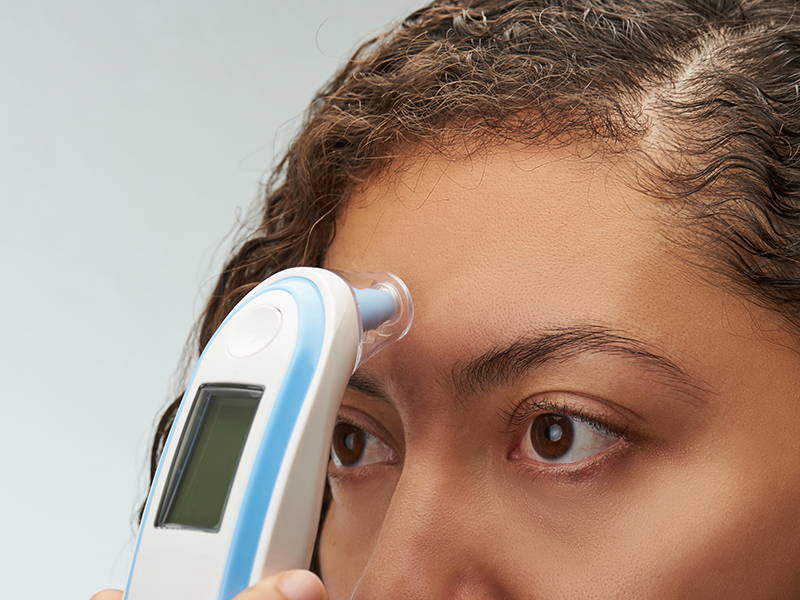The coronavirus pandemic has upended nearly every industry and has every employer wondering, “When will it be safe to bring employees back to work?”
Government guidance can shift rapidly, sometimes within the same week. Shelter-in-place orders have been extended by some officials, with others questioning why restrictions are still in place.
With all this uncertainty, many employers are wondering how they can protect their employees once they’re allowed to return to work. Even if the government gives the OK to return, that doesn’t ensure the coronavirus won’t continue to spread, which is causing many employers to consider taking employee temperatures as a precaution upon returning to work.
We have provided guidance primarily from the Equal Employment Opportunity Commission (EEOC) to help employers navigate potential concerns related to taking employee temperatures.
When may an ADA-covered employer take the body temperature of employees during the COVID-19 pandemic?
Generally, measuring an employee’s body temperature is a medical examination. Because the Centers for Disease Control and Prevention (CDC) and state/local health authorities have acknowledged community spreading of COVID-19 and issued precautions, employers may measure employees’ body temperature. However, employers should be aware that some people with COVID-19 do not have a fever.
May an employer take an applicant’s temperature as part of a post-offer, pre-employment medical exam?
Yes. Any medical exams are permitted after an employer has made a conditional offer of employment.
May an employer store in existing medical files information it obtains related to COVID-19, including the results of taking an employee’s temperature or the employee’s self-identification as having this disease, or must the employer create a new medical file system solely for this information?
The ADA requires that all medical information about a particular employee be stored separately from the employee’s personnel file, thus limiting access to this confidential information. An employer may store all medical information related to COVID-19 in existing medical files. This includes an employee’s statement that they have the disease or suspect they have the disease, or the employer’s notes or other documentation from questioning an employee about symptoms.
If an employer requires all employees to have a daily temperature check before entering the workplace, may the employer maintain a log of the results?
Yes. The employer needs to maintain the confidentiality of this information.
As government stay-at-home orders and other restrictions are modified or lifted in your area, how will employers know what steps they can take consistent with the ADA to screen employees for COVID-19 when entering the workplace?
The ADA permits employers to make disability-related inquiries and conduct medical exams if job-related and consistent with business necessity. Inquiries and reliable medical exams meet this standard if it is necessary to exclude employees with a medical condition that would pose a direct threat to health or safety.
Direct threat is to be determined based on the best available objective medical evidence. The guidance from the CDC or other public health authorities is such evidence. Therefore, employers will be acting consistently with the ADA as long as any screening implemented is consistent with advice from the CDC and public health authorities for that type of workplace at that time.
For example, this may include continuing to take temperatures of everyone entering the workplace and asking questions about symptoms (or requiring self-reporting). Similarly, the CDC recently posted information on return by certain types of critical workers.
Employers should make sure not to engage in unlawful disparate treatment based on protected characteristics in decisions related to screening and exclusion.
Best Practices for Implementing Screening Employee Temperatures
If an employer decides to conduct screening employee temperatures, they should be sure to comply with all official rules including, but not limited to, the ADA and Title VII of the Civil Rights Act. Here are some other tips to keep in mind:
- Communicate the plan screening employee temperatures well in advance and explain why.
- Be sure employees understand the implications of such a test (i.e., a high temperature means being sent home).
- Have a set temperature threshold and stick to it. For instance, 100.4 F is the CDC’s measurement of a fever. Employers should consider using that as the threshold for when to bar an employee from entering the workplace.
- Consider using no-touch thermometers to avoid spreading illness.
- Ideally, employers will utilize properly trained medical staff or facilitators to administer the temperature checks.
- Make sure the temperature checking stations are far enough from the workplace entrance and have proper social distancing setups (e.g., a waiting area where individuals are no closer than 6 feet together).
- Maintain proper disinfecting procedures at the testing station and within the workplace as a whole.
The coronavirus pandemic, like every other hardship, will eventually pass. Together, we can implement strategies to create a safe and productive workplace for employees to return to.
If you would like any additional information about transitioning back to work, creating a safe workplace, action plans for your business and much more, please contact us. We’re here to help!
